Brazil is the largest country in South America. It has a population of over 241 million people scattered over an area of 8.5 million square kilometers. Brazil is the fifth largest country by land area and the seventh most populous. But do you know the Brazilian cities with the largest land mass? If asked, most people think of famous cities like Rio de Janeiro, São Paulo, and the likes. On the contrary, the largest cities in Brazil are not the most populated or popular. Read on to find out the five largest cities in Brazil in terms of land area.
1. Manaus — 4,402 Square Miles
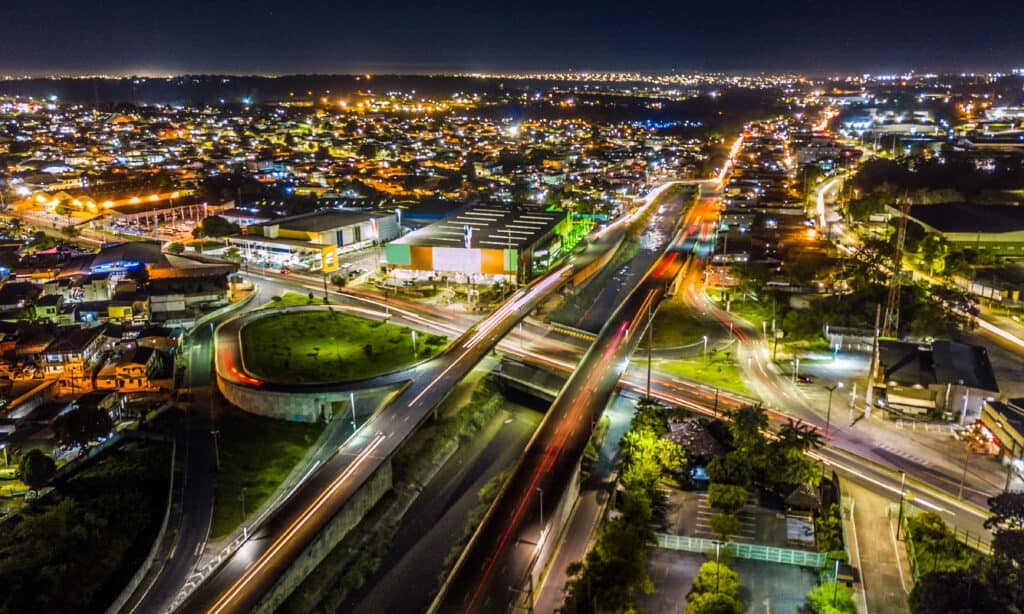
iStock.com/Daniel Figueiredo
The famous Amazon Forest, the world’s largest rainforest, is in Brazil. Interestingly, a big city with a population of over two million people is located right within that forest. Manaus is the seventh largest city in Brazil in terms of population and one of the country’s largest cities by land area. It occupies an area of over 4,402 square miles (11,401 square kilometers).
Manaus is located in northwestern Brazil and is the capital of Amazonas. The city is on the confluence of River Negro and River Solimões, two of the biggest rivers in the Amazon region. Fondly referred to as the “Heart of the Forest,” Manaus is an important center for scientific research in the Amazon area because it hosts the National Institute of Amazonian Research. It is also a vital tourist destination and departure point to the rainforest.
Manaus has a thriving manufacturing economy. The city’s rubber industry has been popular since the 1800s and is responsible for most of its growth. Electronics, soaps, and chemical products are also actively manufactured in its various industries.
2. Brasilia — 2,240 Square Miles
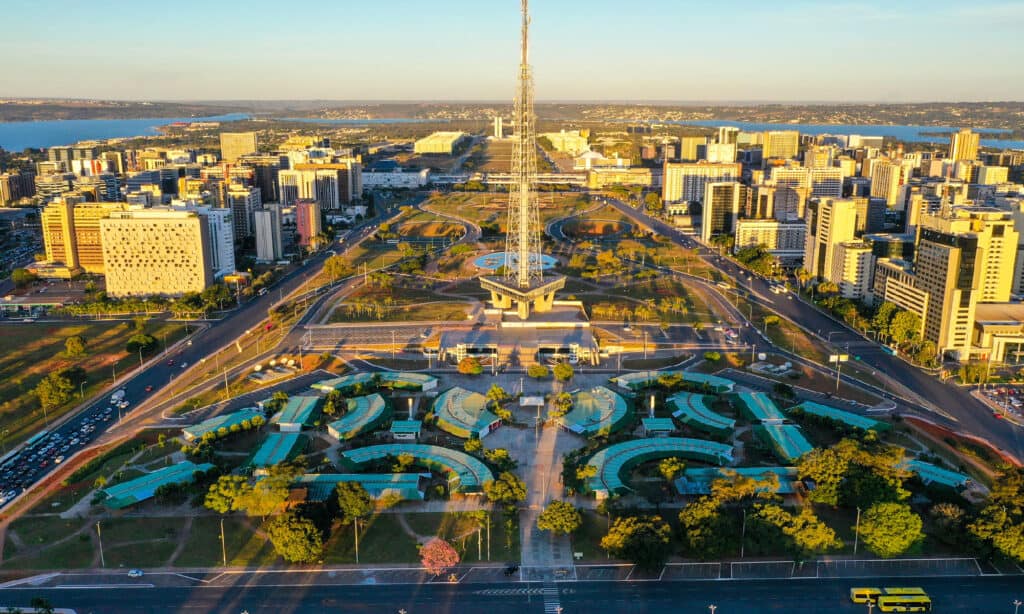
iStock.com/Breno Fortes
Brasilia, Brazil’s capital city, has a total land area of 2,224 square miles. The city is located in the Brazilian highlands at an elevation of 1,172 meters. Despite being Brazil’s largest city, Brasilia is the third most populous city, with about 3,094,325 people.
Apart from being the country’s political center, Brasilia is a vital economic center, providing up to 3.6% of the country’s total GDP. The city has 124 embassies and was one of the host cities of the 2013 FIFA Confederations cup and 2014 FIFA World Cup.
As Brazil’s capital city, Brasília was planned from scratch. In 1960, the country inaugurated the city as its new capital as part of a project to move the seat of political power to a more centralized location. It cost Brazil $2 trillion to design and build its new capital. In 2017, UNESCO named Brasília the “City of Design.” When viewed from above, the main portion of Brasilia was designed to look like an aircraft or butterfly.
3. Petrolina, Pernambuco — 1,761 Square Miles
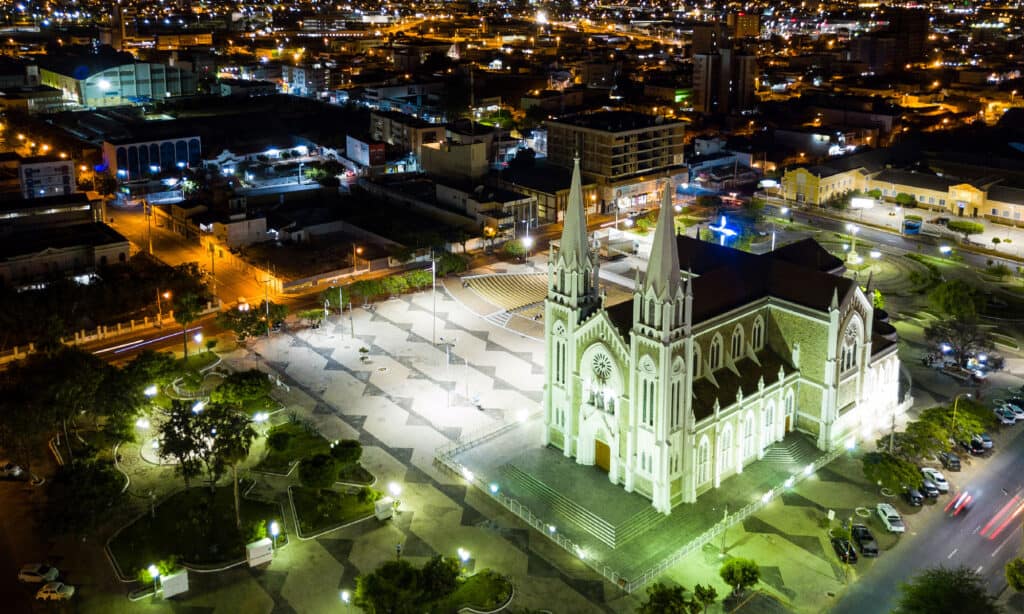
Adriano Aquino/Shutterstock.com
Petrolina, one of Brazil’s largest cities by land area, has a “not so impressive” population of about 354,317, occupying its massive land area of 1,761 square miles. The city is located in the southernmost part of the state of Pernambuco, in the valley of the São Francisco River. The city is closely integrated with Juazeiro, which is located on the opposite bank of São Francisco.
Petrolina is one of Brazil’s most important agricultural cities despite having a hot and dry climate with erratic rainfall. Petrolina’s main economic activity is irrigated agriculture, and several related industries are also located in the city. Plants like mangoes, grapes, coconuts, guava, and bananas are grown extensively in the state.
4. São Paulo — 585 Square Miles
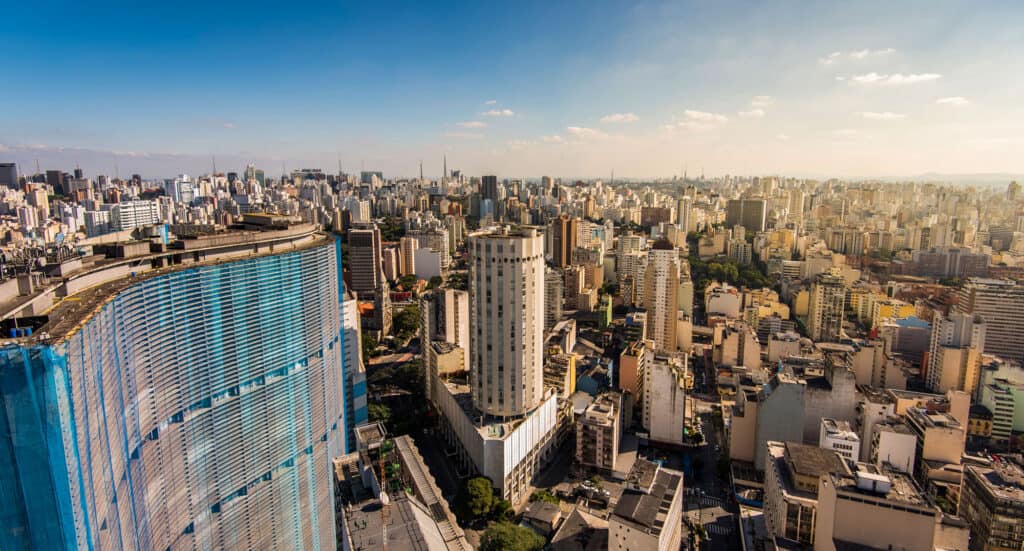
iStock.com/dabldy
Although it is not Brazil’s capital, the city of Sao Paulo is arguably one of the most popular cities in the country. The capital of the state of Sao Paulo is also the most populated city in Brazil. An estimated population of more than 9.5 million people live within the 585 square mile area that forms the central city. The city’s metropolitan area covers an area of over 3,110 square miles.
São Paulo’s reputation as an alpha global city goes beyond being Brazil’s most populated city. It is also the most populated city in the Americas and ranks 5th in the world in terms of its population.
Domestically, São Paulo holds significant economic power. Up to 10.7% of Brazil’s GDP is generated in this city. The concrete jungle is home to up to 63% of multinationals in Brazil, making it the country’s unofficial commercial capital. Sao Paulo is Brazil’s most multicultural city. As a melting pot city of people from more than 200 native countries, the city’s influence on the country’s culture is quite remarkable. Here’s a fun fact; São Paulo has more Italian descendants than any city in Italy. This shows how multicultural and diverse the city is.
5. Rio De Janeiro — 486.5 Square Miles
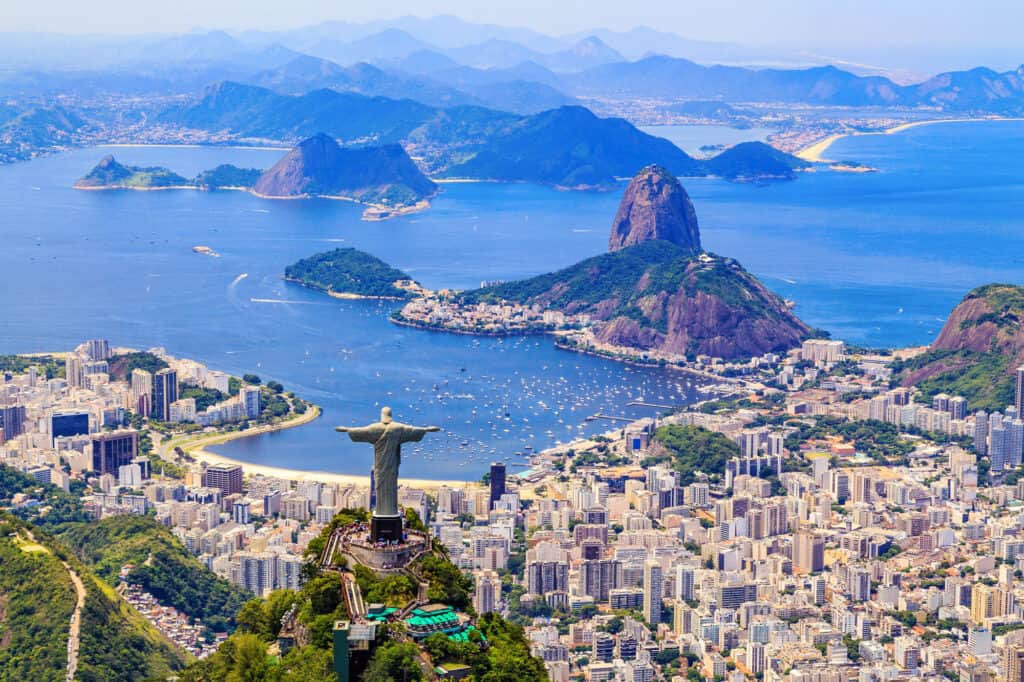
iStock.com/Yuri de Mesquita Bar
Brazil’s former capital until 1960, Rio de Janeiro, is still one of Brazil’s largest cities in terms of population and land area. It is the most popular city in Brazil and the most visited city not just in Brazil but in the entire southern hemisphere. The city occupies a land area of 486.5 square miles.
The Christ the Redeemer statue is one of the most recognizable tourist attractions in the world. The statue, constructed on a mountain overlooking the city, is visible from anywhere in Rio De Janeiro and has been named one of the new wonders of the world. This is just one of several attractions that annually draw millions of people to the city.
Rio de Janeiro is every beach lover’s paradise with several beautiful beaches like the Barra da Tijuca, Ipanema, Leblon, and Copacabana, which are famous all over the world with tourists. The harbor of Rio de Janeiro is also another of the city’s iconic attractions. In addition to the natural beauty of this city, Rio is also known for its music and numerous carnivals and festivals.
Up Next
- Discover the 5 Most Populated Cities In Brazil
- The 10 Largest Cities in Nigeria
- Discover The 10 Largest Cities In The United States
The post Discover the 5 Largest Cities in Brazil By Land Area appeared first on AZ Animals.
from Animal News, Facts, Rankings, and More! - AZ Animals https://ift.tt/Lm7z4Vh